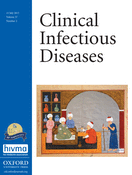 Cover image
Cover image
On the cover: Preparation of Remedies for Smallpox under the instruction of Avicenna, Treaty of Medicine after Avicenna (Ibn Sina), (Persian, 17th century): Ottoman manuscript. University Library Istanbul. The Art Archive, Art Resource, NY. Reproduced with permission.
On the cover is an illustration of a 17th-century Ottoman manuscript depicting preparation of remedies for smallpox under the instruction of Avicenna, the noted Persian physician and philosopher. In this scene, Avicenna’s apprentice uses a balance scale to measure carefully the ingredients for the treatment of the patient’s dermatological manifestations.
The prominent Persian polymath, Abu Ali Husain ibn Abdullah ibn Sina (980–1037 AD) known as Avicenna, was perhaps the most influential scholar of the Islamic Golden Age, contributing to the development of medicine, science, astronomy, logic, and mathematics in medieval and later eras. Smallpox, perhaps the major fatal infectious disease of the period, was extensively discussed in Avicenna’s medical masterpiece, Al-Qanun fi al-Tibb (The Canon of Medicine). In this treatise, he warned patients about the probable ophthalmic and respiratory complications of the disease, advising precautionary measures including administration of different concoctions and ointments as ophthalmic medications and antiseptic mouthwash. The persistent scars following the disease were also of cosmetic consideration and Avicenna prescribed numerous ointments to resolve the problem.
Guest Contributors: Kamyar Ghabili & Samad EJ Golzari, Tabriz, Iran.
(Mary & Michael Grizzard, Cover Art Editors)


